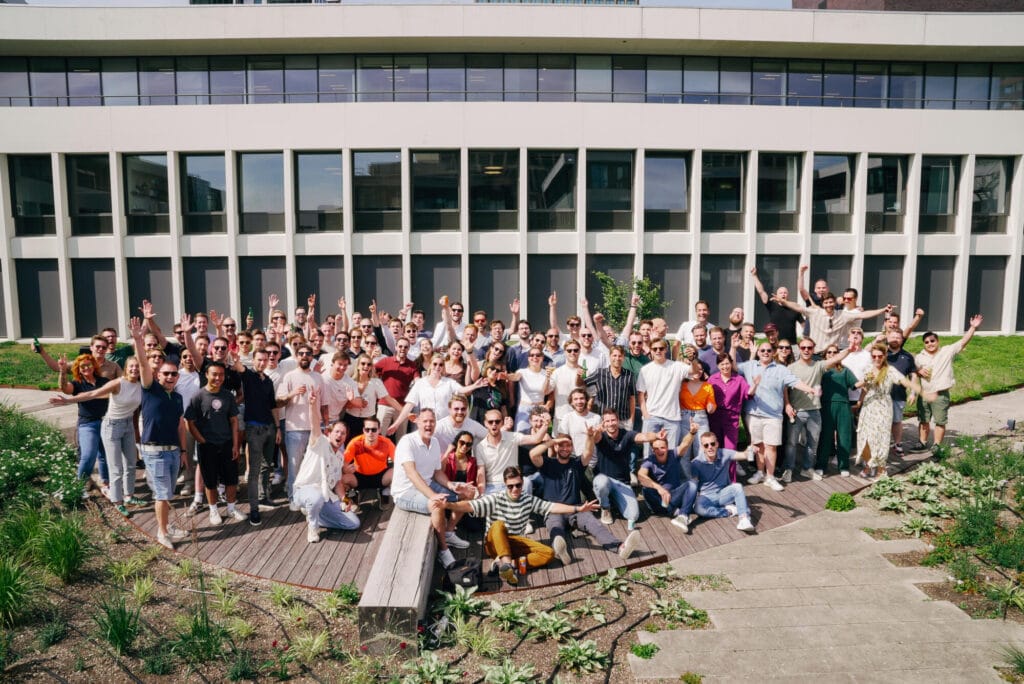Optimise and automate business processes
In a world where efficiency is increasingly important, it has become essential to optimise business processes. And one step further? Automating them. This allows organisations and departments to drastically improve the way they work.
Sound familiar?
- Inefficient & expensive processes
- Dissatisfied employees
- (Low) quality of data input
- Blocked productivity growth
Repetitive tasks such as extracting data from documents in different formats (i.e. word, PDF, .txt) and filling in fields is not only time-consuming, but also brings risk of errors along with it. Through automating these tasks, your employees can address the work that truly makes an impact and adds value. Digital employees conduct tasks from with unprecedented speed, error-free precision and without coffee breaks.
Benefits of process automation
Increased efficiency
Perform tasks faster and minimise waiting times by automating processes from start to end.
Higher accuracy
Everyone makes mistakes. Digital employees don’t. Leverage automated workflows that work consistently and accurately.
Cost savings
Lower operational cost by automating repetitive tasks. Give time back to your employees for innovative & strategic work.
The power of digital employees
With our solutions, you transform processes completely. Think about automatically processing large amounts of data, optimising back-office processes or managing complex workflows. Digital employees not only make processes more efficient, but also increase your team’s satisfaction by taking repetitive work off their hands.
At Ciphix, we have extensive experience in addressing business challenges through optimisation and automation. By combining technologies such as Artificial Intelligence (AI), Robotic Process Automation (RPA) and integrations, we automate to eliminate repetitive tasks. We like to call these your digital workforce.
The result? Smoother processes, lower costs, fewer errors and happier employees.
What people say about us
Ready for the future
We believe that in a world with so much technological advancement, there is no reason is for tedious and boring jobs. Technology optimises and automates not only processes, but adds also value added to the organisation. With future-proof solutions, together we create a more efficient and more productive work environment.
Speed up your processes
By tasks to automation are processes faster completed.
Promote innovation
Through automating routine tasks, employees can focus on value and innovation.
Make data-driven decisions
With valuable data from automated systems.
Employee central
Substantial increase in job satisfaction because everyday and repetitive tasks are eliminated.
Improve the customer experience
Through automated processes, the customer is once again number one.
Speed up your supply chain
Through automated workflows, you create insight and speed.
Frequently Asked Questions
What are the first steps in optimising and automating business processes?
The first step is to map existing processes and identify bottlenecks. Analyse which tasks are time-consuming, error-prone or performed manually. Then you can determine which processes can be set up more efficiently and where automation adds value. Use tools such as process mapping and workflow analysis to gain insight.
What tools and software are best suited for process automation?
It depends on the need and complexity of the process. For simple automations, tools such as Microsoft Power Automate are popular. For more complex processes and large-scale automation, RPA tools such as UiPath, are often used. In addition, AI solutions and low-code/no-code platforms are playing an increasing role.
Which business processes best lend themselves to automation?
Processes that are repetitive, error-prone and time-consuming are the best candidates. Consider invoice processing, customer and HR onboarding, data entry, inventory management and customer service (chatbots & self-service portals). A good rule of thumb is: if a task is often repeated and has a clear set of rules, it is likely to have potential for automation.
How can I make my workflows more efficient without large investments?
Start with process optimisation before looking at automation. There are often inefficiencies that can be addressed without expensive software, such as better structuring tasks or eliminating unnecessary steps. Additionally, you can use free or affordable tools, such as Trello, Notion or Google Workspace, to streamline processes.
What are the biggest pitfalls in automating processes?
Common pitfalls are:
- Automating too quickly without process optimisation, leading to inefficient processes being captured in automation software.
- Lack of employee engagement, leading to resistance and implementation failure.
- Insufficient flexibility, resulting in automated processes not moving well with changing business needs.
- Ignoring data quality, which can lead to faulty decisions or failed automations.
Can automation coexist with customised processes?
Yes, but it requires a smart approach. Low-code and no-code solutions make it possible to automate custom processes without large IT investments. In addition, API links and integration platforms can help different systems work together efficiently without completely replacing existing processes.
How do I measure the success of process optimisation and automation?
Measure success by defining KPIs, such as time savings, cost savings, error reduction and customer satisfaction. Use analysis tools and dashboards to monitor performance and continue to evaluate and improve processes regularly. Also solicit feedback from employees and customers to see if automation is actually adding value.
Discover to technologies behind Intelligent Automation
Challenge us
Want to know more? We are happy to help you take the next step.























